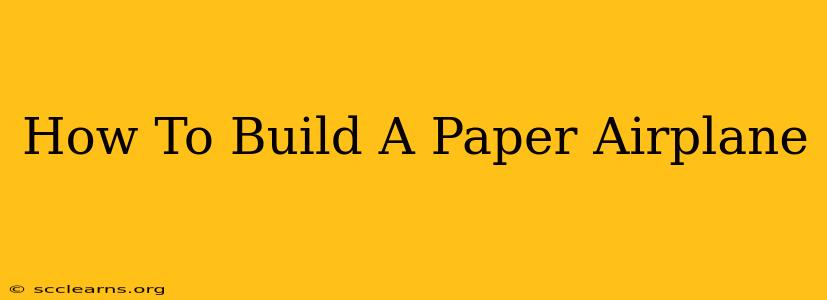Want to create a paper airplane that soars through the air like a champion? Forget those flimsy, pathetic attempts of your childhood. This guide will teach you how to build a paper airplane that truly flies, covering different designs for varying flight characteristics. Get ready for some serious air superiority!
Choosing Your Paper: The Foundation of Flight
The right paper is crucial for a successful paper airplane. Avoid flimsy printer paper; it crumples too easily. Instead, opt for:
- Lightweight Cardstock: Offers a good balance of strength and weight.
- Construction Paper: A bit heavier than printer paper, providing better stability.
- Origami Paper: Specifically designed for folding, offering excellent crispness and durability.
Pro Tip: Avoid using heavily textured or glossy paper, as these can disrupt airflow and reduce flight performance.
Classic Dart Design: A Tried-and-True Method
This design is a classic for a reason – it's simple, easy to make, and boasts a surprisingly good glide.
Steps:
- Fold in Half: Fold your paper in half lengthwise, crease sharply, and unfold.
- Fold the Top Corners: Fold the top two corners down to the center crease, creating two triangles.
- Fold the Top Flaps Down: Fold the top edges of the triangles down to the center crease again.
- Fold the Wings: Fold each side of the airplane in half, creating the wings. Adjust the angle of the wings for different flight characteristics. A sharper angle results in a faster, shorter flight, while a wider angle produces a slower, more gliding flight.
- Adjust the Nose: If needed, you can gently bend the nose of the plane slightly upward for increased lift.
Advanced Designs: Taking Flight to the Next Level
Ready for a challenge? These designs offer more advanced flight capabilities:
The Helicopter: A Unique Spin on Flight
This design creates a spinning effect, making for a captivating flight experience. A detailed tutorial can easily be found with a quick online search – many video examples exist showing the steps clearly. Look for tutorials that emphasize precise folding techniques for best results.
The Glider: Maximum Distance and Glide
The glider design prioritizes distance and smooth gliding. This design is generally more complex than the dart, involving more folds and potentially intricate wing shaping. Again, a visual tutorial will be extremely helpful. Search online for "paper airplane glider tutorial".
Tips for Optimal Flight Performance
- Sharp Creases: Make sure your folds are crisp and clean. Weak creases will lead to instability in flight.
- Symmetry is Key: Ensure both sides of your airplane are symmetrical. Any asymmetry will affect the flight path.
- Experiment with Adjustments: Don’t be afraid to experiment with wing angles, nose adjustments, and other tweaks to optimize your airplane’s flight. This is where the fun truly lies!
- Throwing Technique: Practice your throwing technique. A smooth, overhand throw is ideal. Aim for a consistent release angle for repeatable results.
Conclusion: Take to the Skies!
Building paper airplanes is a fun and engaging activity for all ages. By following these steps and experimenting with different designs, you'll be amazed at how far and how long your creations can fly. Now go forth, and conquer the skies!

